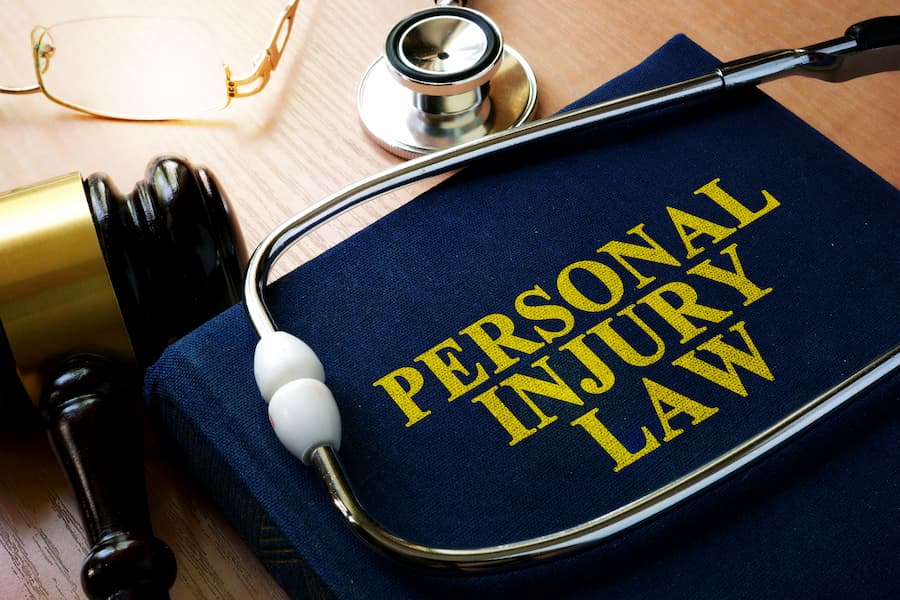If you've been injured in an accident and plan to file a personal injury lawsuit in Austin, TX, one of the first questions you may have is about a pre-existing injury. Talk with an Austin personal injury lawyer to make sure you are on the right track and protecting your rights.
In this post, we'll discuss what pre-existing injuries are and how they can impact your case. We'll also offer some tips on what to do if you're facing this situation. If you've been injured in an accident, contact our office today for a free consultation with one of our experienced Austin personal injury lawyers.

What qualifies as a pre-existing condition in an Austin Texas personal injury case?
A pre-existing condition, in the context of a personal injury case, refers to any injury, illness, or medical condition that existed prior to the injury-causing accident. This can include physical injuries, such as a previous broken bone, or mental health damages, such as depression or anxiety. The presence of a pre-existing condition does not automatically negate a personal injury claim, but it can affect the extent of compensation that the victim is entitled to.
There are several factors that can determine whether a condition is considered pre-existing for the purposes of a personal injury case. For example, the length of time between the pre-existing condition and the injury-causing accident, the severity of the pre-existing condition, and the extent to which the pre-existing condition was being treated can all be considered. If the pre-existing condition was not being treated or was only treated minimally prior to the injury-causing accident, it is less likely to be considered a pre-existing condition. On the other hand, if the pre-existing condition was being actively treated or was significantly affecting the victim's quality of life prior to the accident, it is more likely to be considered a pre-existing condition in the personal injury case.
It is important for the victim to disclose any pre-existing conditions to their personal injury attorney, as these conditions can impact the value of the personal injury claim and the strategy for negotiating a settlement. An experienced personal injury attorney will be able to evaluate the impact of the pre-existing condition on the case and provide guidance on how best to proceed.
Austin, TX Pre-Existing Injury Laws
In Austin, TX, when a person is injured as a result of another person's negligence, they are entitled to compensation for their damages. This includes compensation for medical expenses, lost wages, pain and suffering, and any other losses that resulted from the injury.
However, if the victim has a pre-existing injury, the defendant may argue that the victim's current injuries are not solely a result of their negligence but are instead a result of the pre-existing condition. This can make it more difficult to determine the amount of compensation the victim is entitled to, as the defendant may only be responsible for the portion of the victim's damages that is directly related to their negligence.
Austin, TX' Eggshell Plaintiff Doctrine
An important consideration in an Austin, TX personal injury case, is that Texas uses the eggshell plaintiff doctrine, and how this impacts a Plaintiff's claim for damages.
The eggshell plaintiff doctrine is a legal principle that holds a defendant liable for the full extent of a victim's damages, even if the victim had a pre-existing condition that made them more vulnerable to injury. Under this doctrine, a defendant may be held responsible for the victim's damages, despite the existence of the victim's pre-existing condition. The defendant must take the victim as they are, with all their strengths and weaknesses, and cannot argue that the victim's pre-existing condition contributed to their current injuries.
This doctrine is based on the idea that it is not fair to relieve a defendant of liability for their negligence just because the victim had a pre-existing condition. The defendant is responsible for the harm they caused, regardless of the victim's pre-existing condition.
In personal injury cases in Austin, TX, the eggshell plaintiff doctrine is particularly important when it comes to determining the extent of a victim's damages. The defendant may argue that the victim's pre-existing condition contributed to their current injuries, making it difficult to determine the amount of compensation the victim is entitled to. In these cases, a medical expert may be called to testify as to the extent that the pre-existing injury contributed to the victim's current condition.
The eggshell plaintiff doctrine also affects the calculation of compensation for the victim's pain and suffering. If the defendant argues that the victim's pre-existing condition contributed to their current pain and suffering, it is important for the victim to provide strong evidence of the extent to which the current injury has affected their quality of life. This may include testimony from family members, friends, or co-workers who can attest to the impact of the injury on the victim's daily activities and relationships.
Medical Expert Testimony
To determine the extent of the defendant's liability, a medical expert may be retained to provide evaluation of the Plaintiff's medical history and condition. The expert may be asked to testify as to the extent that the pre-existing injury contributed to the victim's current condition. This can involve a detailed examination of the victim's medical records, including any treatments they received prior to the accident, as well as a review of the medical evidence related to the current injury.
In a personal injury case, the defense may attempt to attack the credibility of any medical expert testimony by arguing that it is not reliable or relevant. For example, they may try to show that the doctor's opinion was based on incomplete information or outdated scientific research.
They might also argue that the doctor's testimony does not take into account other factors such as pre-existing conditions or environmental factors that could have contributed to the plaintiff's injuries. The defense could even challenge whether an expert witness is qualified in their field and has enough experience in similar cases to be considered credible. Ultimately, this will be a question for the jury to decide if a medical expert's testimony should be accepted as evidence in a personal injury case.
Comparative Negligence

It is important to note that in Austin, the doctrine of comparative negligence applies in personal injury cases. This means that if the victim was partially at fault for the accident, their compensation may be reduced in proportion to their degree of fault. For example, if the victim was found to be 25% at fault for the accident, their compensation would be reduced by 25%. Reach out to a personal injury lawyer.
In addition to the issue of comparative negligence, pre-existing injuries can also impact the amount of compensation the victim is entitled to for their pain and suffering. The defendant may argue that the victim's current pain and suffering is not solely a result of their negligence but is instead a result of the pre-existing injury.
If you or someone you know has been injured due to another party’s negligence and have pre-existing injuries that may complicate your case, contact Fletcher Law for help. Our team of experienced attorneys can provide guidance on how best to navigate the complexities of this legal concept and ensure that you receive fair compensation for your pain and suffering. With our knowledge of comparative negligence laws in Austin, TX, we will fight hard to protect your rights as an injured person so that justice is served. Contact our firm today at 512-619-4006